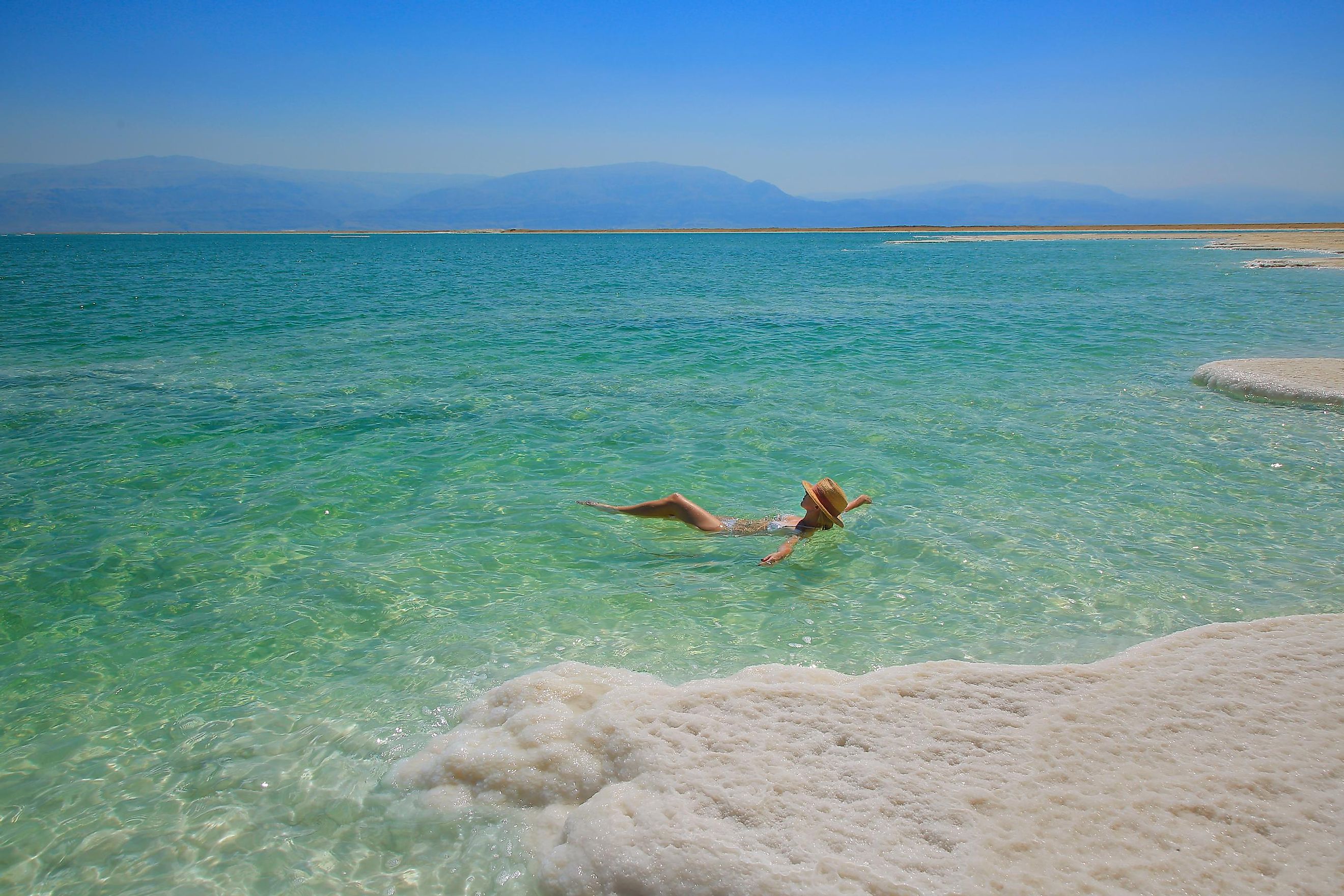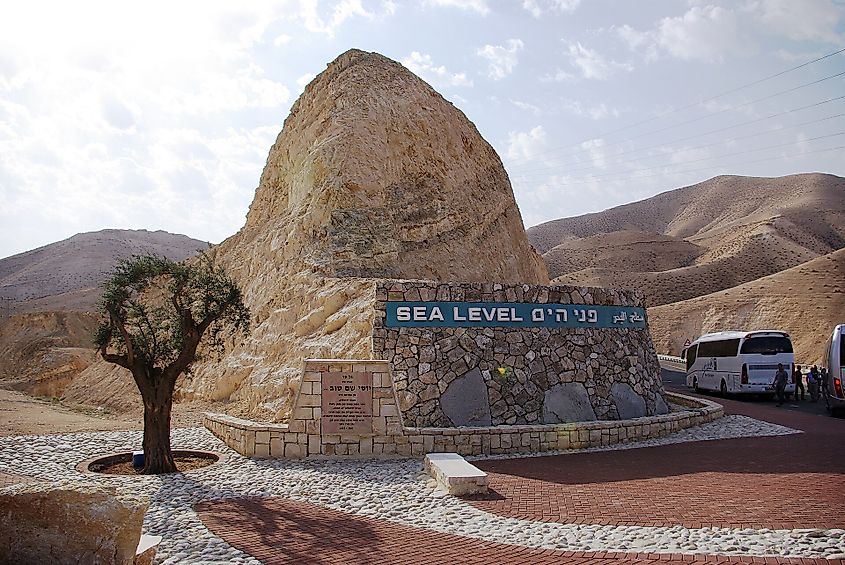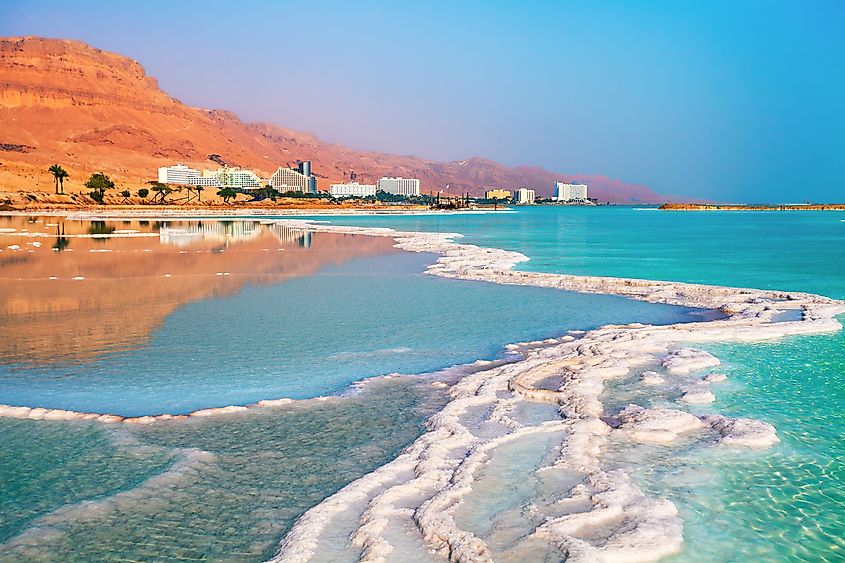
Where is the Lowest Point in the World?
For almost two centuries, humans have been collecting information about the elevation of places around the world, both the extreme' highs,' such as Mount Everest and the extreme' lows,' such as the Dead Sea. Universally, we know to record these elevations based on 'sea level,' but what exactly does that mean? Is the level of all seas and oceans across the globe the same? The simple answer to that is no. The more complicated answer is considered below.
Defining 'Sea Level'

Sea level, or Mean Sea Level (MSL), determines the surface level of the waters in the four named oceans: Atlantic, Pacific, Indian, and Arctic. These points are taken from locations where the water sits as naturally as possible, without including outliers such as high or low tides. Due to uncontrollable factors such as severe weather, the changing ocean currents caused by the warming oceans, and the polar ice melting, to name a few, the mean of the recorded ocean water level is far more useful than the average in determining a standard point of elevation for global ocean waters. This is because when calculating the mean of a set of numbers, the outliers are removed, as opposed to when an average is calculated. Historically, these levels were recorded using trigonometric methods, while in modern times, sea levels are usually determined with the help of satellite laser altimeters. First determined in the early 1800s, the Mean Sea Level has been maintained as a constant to prevent inaccuracies due to the changing sea level.
Use Of Sea Level To Express The Elevation Of The World's Lowest Point
Because determining the elevation of a place measures the elevation from the Mean Sea Level, the modern changes in global sea levels do not impact it because Mean Sea Level is a relative term. It means that once the natural level of the four big oceans was determined, all elevations were measured based on this point of origin. As long as the scientific community continues to use this standardized measurement, the elevations calculated for any point on Earth remain correct. Let's think of the Mean Sea Level as point zero on a Cartesian plane. The elevations of places around the world are either positive numbers, indicating an elevation above sea level, or negative numbers, indicating an elevation below sea level. Using this Mean Sea Level system, the Dead Sea, located in Israel, has been determined to be the lowest point on Earth.
The Lowest Point On Earth

The Dead Sea, also known as the Sea of Death, Sea of Salt, and Sea of the Arabah, is the world's lowest point on Earth. While the name of the Dead Sea seems to fit, it is not completely correct. While there are no species of algae, fish, or any other invertebrates or vertebrates living in the waters of the Dead Sea, there are single-cell organisms alive and well living in what was once thought to be uninhabitable due to the salinity of the water.
Being the lowest point on Earth means that the Dead Sea is the farthest from the Mean Sea Level when considered directionally between the Earth's core and the Mean Sea Level. The Dead Sea itself is located along the border of Israel and Jordan in what was once the Fertile Crescent. The Dead Sea was measured as sitting at an elevation of 1,371 feet below sea level in 2019, this being more than twice as low an elevation as the next lowest point on Earth, Lake Assal in Djibouti.
The elevation of the Dead Sea entered academic consideration in 1837 when two men, George Henry Moore and William George Beek, published their expedition findings in the Journal of the Royal Geographical Society of London. Since then, the Dead Sea has been attracting tourists from all over the world. At first, it was a complex journey to reach the Dead Sea. Long hot days on camelback, fighting the extreme heat, and barren landscapes of the region were some of the challenges they had to face. Many died on their journey, but this did not seem to daunt those determined to visit the lowest place on Earth.
Why Moore and Beek even considered determining the elevation of the Dead Sea is most likely a consequence of its storied and mythologized histories. Mentioned in many religious texts and having many fascinating origin stories, the Dead Sea would have been known by name to most European men in the academic community in the early 1800s. Expeditions to countries that were a part of the Fertile Crescent were extremely common during this period; this was the era of tomb raiding and cultural looting. Although there are competing narratives, it seems likely that Moore and Beek were traveling in the Dead Sea region doing the same.
The Dead Sea Today

Today, the Dead Sea has become one of Israel's most popular destinations. Over the decades, the Dead Sea has become universally recognizable, bringing tourists from all around the world. Both tourists and locals enjoy rubbing Dead Sea mud over their bodies, the claimant being that the over twenty minerals in the mud settled on the sea bed in the shallows, mixed with the highly salinated waters, will do wonders for your skin. So popular is this notion that multiple cosmetic and dermatological companies sell Dead Sea mud for skin treatments.











